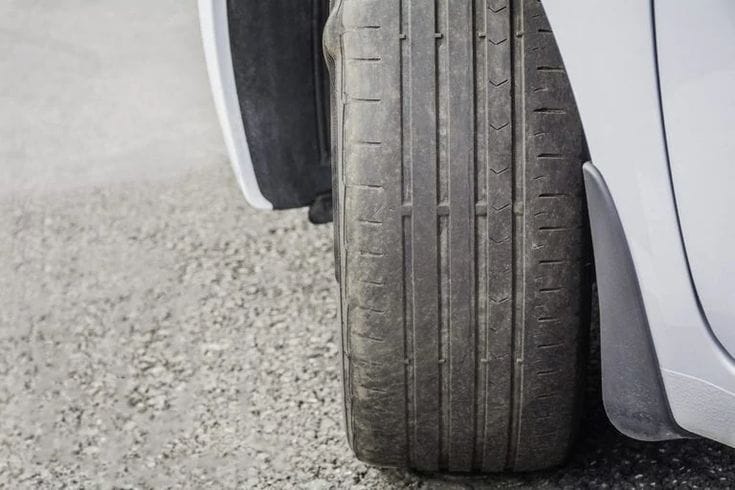What Causes Uneven Tyre Wear? A Complete Diagnostic Guide

Introduction
What causes uneven tyre wear? Uneven tyre wear reduces performance, safety, and tyre lifespan while increasing fuel costs. By understanding tyre wear indicators and recognizing common patterns, drivers can identify underlying issues before they become serious problems. This guide examines all major causes of uneven wear and provides actionable solutions.
Key Takeaways
- Misalignment is the leading cause of uneven wear patterns
- Incorrect inflation causes distinct wear on edges or center tread
- Suspension issues often create irregular wear patches
- Driving habits significantly impact tyre wear distribution
- Regular checks of tyre wear indicators can detect problems early
- Most uneven wear patterns can be prevented with proper maintenance
1. Wheel Alignment Issues
Toe Misalignment
- Inner/outer edge wear: Wheels pointing inward or outward
- Feathered edges: Tread blocks show angled wear patterns
- Solution: Professional alignment every 12 months or after impacts
Camber Problems
- One-sided shoulder wear: Excessive positive/negative camber
- Common causes: Worn suspension components or incorrect setup
- Impact: Reduces contact patch efficiency by up to 30%
2. Inflation-Related Wear Patterns
Underinflation Effects
- Both shoulder wear: Excessive flexing of sidewalls
- Increased rolling resistance: Reduces fuel efficiency by 5-10%
- Heat buildup: Accelerates rubber degradation
Overinflation Consequences
- Center tread wear: Reduced contact patch area
- Harsher ride quality: Less impact absorption
- Increased puncture risk: Less cushioning against road hazards
3. Suspension Component Wear
Shock Absorber Failure
- Cupping or scalloping: Diagonal wear patches
- Bouncing effect: Loss of consistent road contact
- Testing method: Push down on each corner – more than 2 bounces indicates wear
Bushings and Bearings
- Irregular patches: Worn components allow excess movement
- Vibration symptoms: Often felt through steering wheel
- Noise indicators: Clunking or squeaking over bumps
4. Driving Style Impact
Aggressive Habits
- Acceleration wear: Spinning tyres on takeoff
- Cornering stress: Shoulder abrasion in turns
- Braking forces: Flat-spotting from locked wheels
Highway vs Urban
- Motorway driving: Even center tread wear
- City driving: More shoulder wear from turns/stops
- Mixed use patterns: Combination wear signatures
5. Tyre Rotation and Maintenance
Rotation Importance
- Front tyres wear 2x faster than rears on most vehicles
- Recommended every 5,000-8,000 miles
- Follow manufacturer’s specific rotation pattern
Balancing Needs
- Vibration above 50mph: Often indicates imbalance
- Weight loss/gain: Changes balance requirements
- Frequency: Every tyre change or vibration occurrence
6. Identifying Wear Patterns
| Pattern | Likely Cause | Solution |
| Inner edge wear | Excessive toe-in | Realignment |
| Outer edge wear | Excessive toe-out | Realignment |
| Center wear | Overinflation | Adjust pressure |
| Both shoulders | Underinflation | Adjust pressure |
| Cupping | Worn shocks | Suspension repair |
| One-side wear | Camber issue | Suspension check |
FAQs: Uneven Tyre Wear Explained
Can uneven wear be repaired?
No, once wear occurs, the tyre cannot be restored. The focus should be on correcting the underlying cause and replacing damaged tyres.
How quickly can misalignment damage tyres?
Severe misalignment can cause noticeable wear in as little as 500 miles. Regular checks prevent this accelerated damage.
Do all vehicles show the same wear patterns?
Front-wheel drive, rear-wheel drive, and AWD vehicles exhibit different characteristic wear patterns due to weight distribution differences.
What’s the cost of ignoring uneven wear?
Premature tyre replacement typically costs £200-£800 per set, plus potential suspension damage from continued use.
Prevention and Solutions
Regular monitoring of tyre wear indicators allows early detection of developing problems. For comprehensive diagnostics and professional corrections, visit Tyrevortex where specialists can:
- Perform laser alignment checks
- Test suspension components
- Recommend tyre-specific solutions
- Provide maintenance schedules
Remember: Uneven wear rarely corrects itself. Addressing the root cause promptly saves money and ensures optimal vehicle safety and performance. Schedule inspections at least annually or whenever abnormal wear patterns become visible.